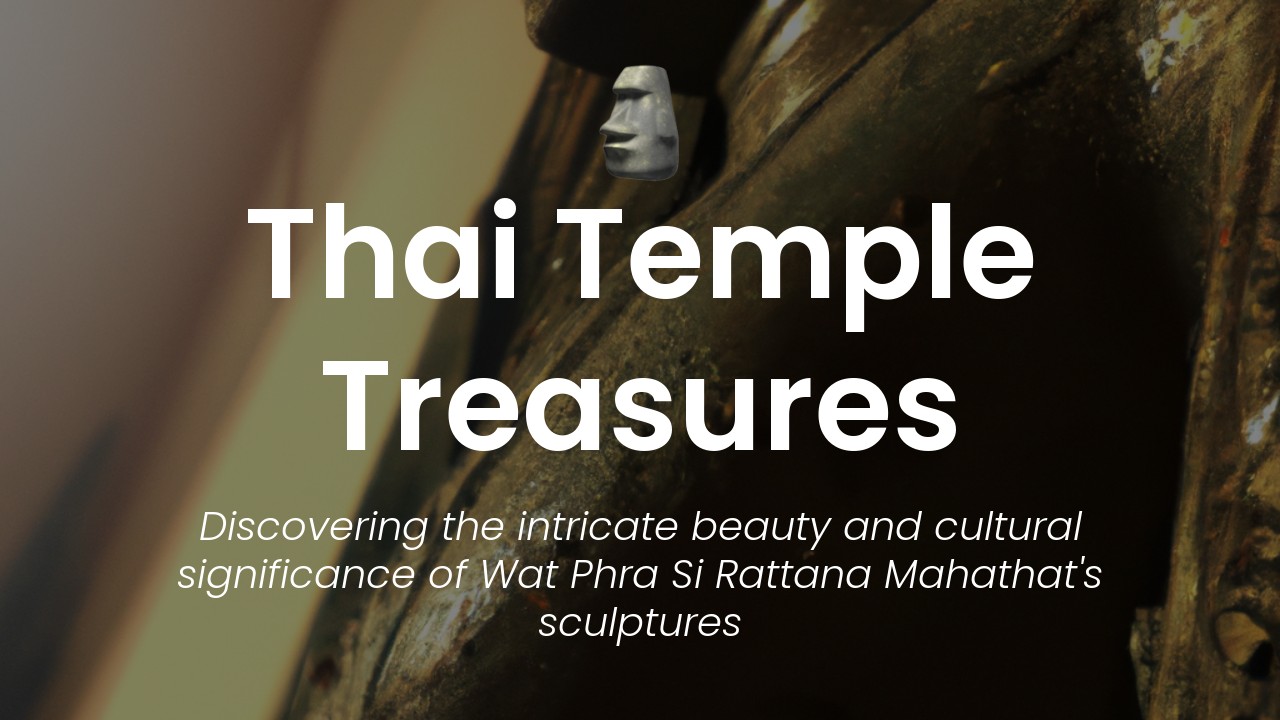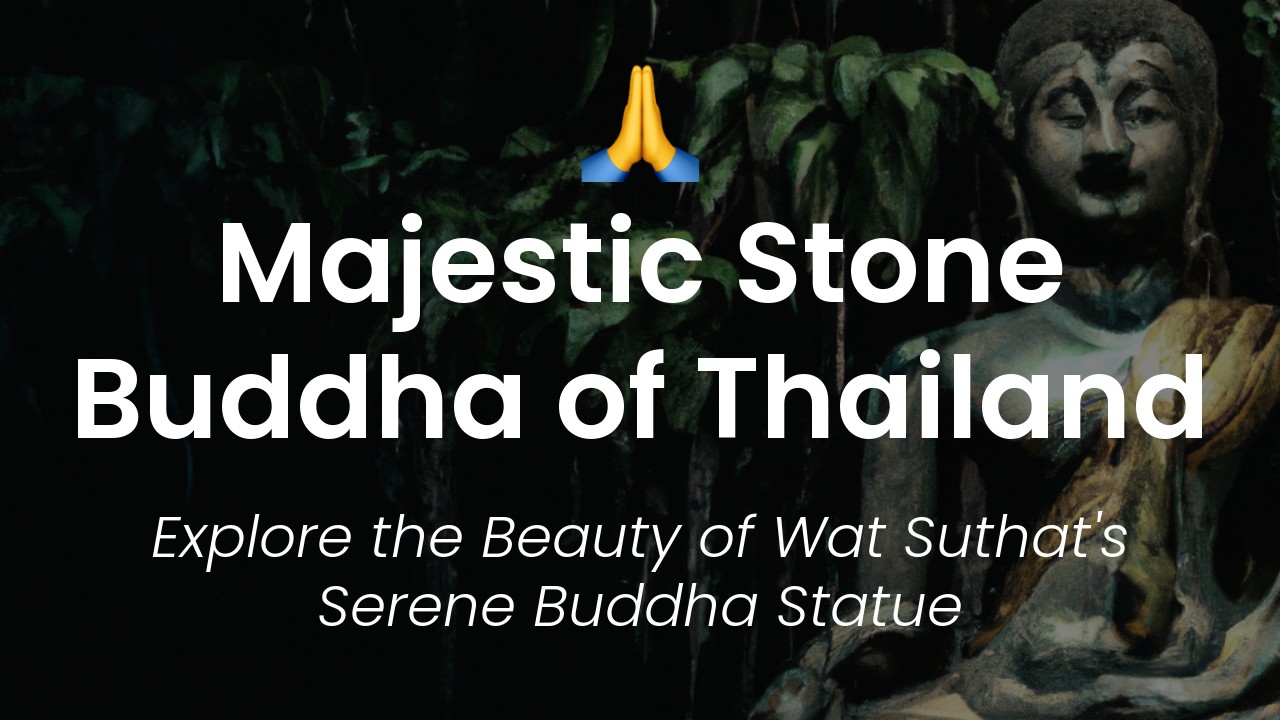As someone who was born and raised in Thailand, I am lucky enough to have grown up surrounded by the rich and vibrant culture of my country. One of the most fascinating aspects of Thailand's culture is its deep connection to Buddhism, which has had a profound impact on the art and architecture of the country for centuries.
In this article, I want to take you on a journey through the mystical world of Buddhist art in Thailand. From ancient temples to modern galleries, I will explore the different forms and styles of art that have emerged from this spiritual tradition.
Thailand is a country with a rich history and a diverse cultural heritage. It has been deeply influenced by its neighbors, including India, China, and Cambodia, but has also developed a unique style all its own. This is especially true when it comes to Buddhist art, which has taken on a distinctly Thai flavor over the years. Whether you are a seasoned art aficionado or simply someone who is curious about the world around you, I invite you to join me on this adventure as we explore the wonders of mystical Buddhist art in Thailand.
The Symbolism of Buddhist Art in Thailand
Buddhism is an integral part of Thai culture, and it reflects in the country's art and craftsmanship. Thai Buddhist art serves as a medium to convey religious belief as well as cultural values. The intricate details depicted in Buddhist art hold a deep meaning that reflects the beliefs and teachings of the religion.
One of the primary symbols in Thai Buddhist art is the lotus flower. The lotus flower holds a significant meaning in Buddhism as it symbolizes purity and enlightenment. You'll frequently see Buddha statues sitting on lotus flowers, which represents the quest for enlightenment.
Another popular symbol in Thai Buddhist art is the Wheel of Life. The Wheel of Life portrays the cycle of birth, death, and rebirth, which is a central concept found in Buddhism. Usually painted in colorful and intricate details, the Wheel of Life represents the perpetual cycle of life and the importance of mindfulness and meditation.
The Wonders of Buddhist Statues
Buddha statues in Thailand come in various poses, and each pose holds a different meaning. For example, the most common pose is the meditation pose, which symbolizes inner peace and tranquility. You'll also see Buddha statues in a reclining pose, which represents Buddha's passing into Nirvana.
Apart from the poses, the materials used to make the statues also hold deep meaning. Bronze and gold are the most popular choices for creating Buddha statues, as they represent wealth and prosperity. Marble, on the other hand, symbolizes purity and elegance.
Intricate Details of Buddha's Face
The face of a Buddha statue is crucial in Thai Buddhist art, as it holds the essence of Buddha's teachings. The facial features of Buddha statues are distinct and easily recognizable, and each aspect holds a specific meaning. The elongated ears of the Buddha statue, for example, symbolize the importance of listening and understanding.
The eyes of Buddha statues in Thailand hold a unique aspect, as they are usually half-closed. The half-closed eyes represent the meditation and inner peace that Buddha has attained. The serene face of Buddha statues in Thailand represents the calm and tranquility that Buddhism strives to achieve.
The Significance of Colors in Buddhist Art
Colors play a significant role in Thai Buddhist art, as they represent different meanings and emotions. Red, for example, symbolizes passion and energy, while green represents harmony and balance. The color gold symbolizes wealth, prosperity, and purity of the mind.
In Buddhist art, the color white holds a special meaning, symbolizing the purity and wisdom of Buddha's teachings. White is often used in creating Buddha statues, as it represents the enlightened nature of the Buddha.
Mystical Depiction of Buddha's Life
Buddha's life story is depicted in various forms of Thai Buddhist art, such as paintings, murals, and sculptures. The artistic interpretation of Buddha's life is mystical, with vivid colors and intricate details.
One of the most popular depictions of Buddha's life is the Jataka tales, which speaks of Buddha's past lives and the lessons he learned along the way. These stories are depicted in beautiful murals in numerous Thai temples and are passed down from generation to generation.
The Beauty of Wat Rong Khun White Temple
Wat Rong Khun, also known as the White Temple, is a breathtaking example of Thai Buddhist art. The temple's intricate design displays the beauty and elegance of Thai culture and art. The white color of the temple symbolizes the purity and wisdom of Buddha's teachings and is adorned with intricate details and carvings.
The unique architecture of the temple is captivating, with a fusion of traditional Buddhist art and modern art. The temple's interior is also adorned with breathtaking murals depicting the journey to enlightenment.
Conclusion
Thai Buddhist art is a true reflection of Thai culture and Buddhism. The intricate details, vibrant colors, and unique symbols convey the beliefs and teachings of the religion. Visiting a temple in Thailand is a must for anyone interested in Buddhist art, as the intricate details and majestic architecture are awe-inspiring. The beauty of Wat Rong Khun is just one example of the magnificence of Thai Buddhist art.







